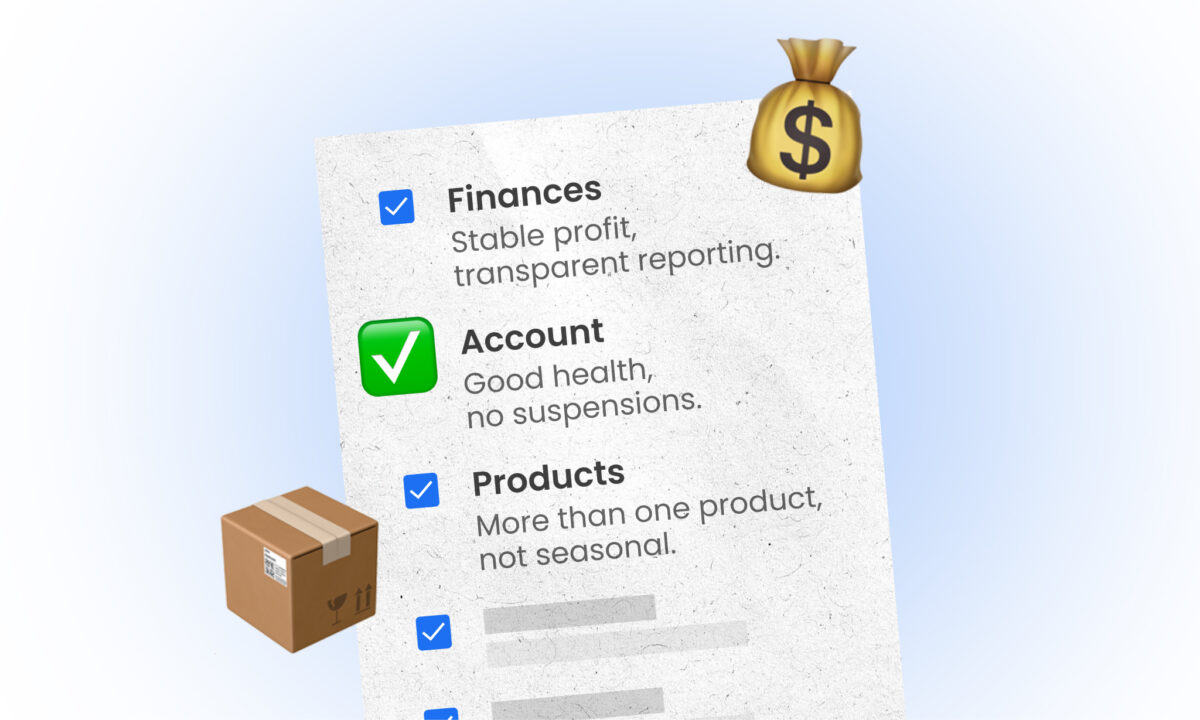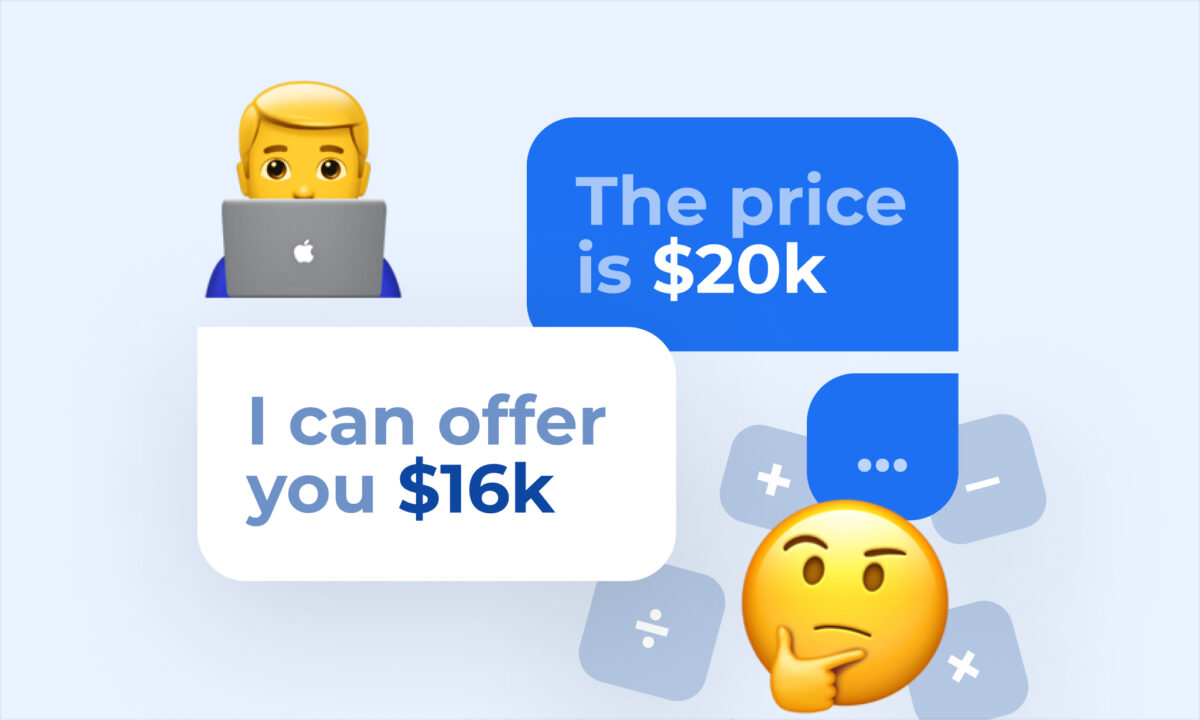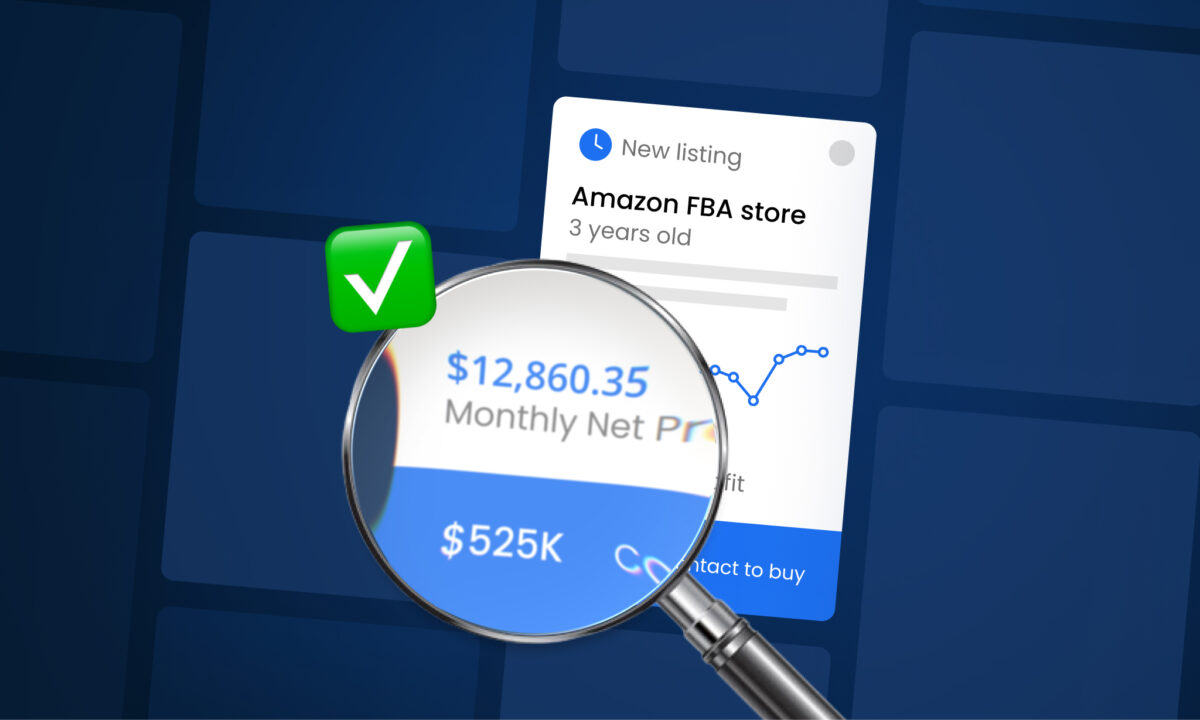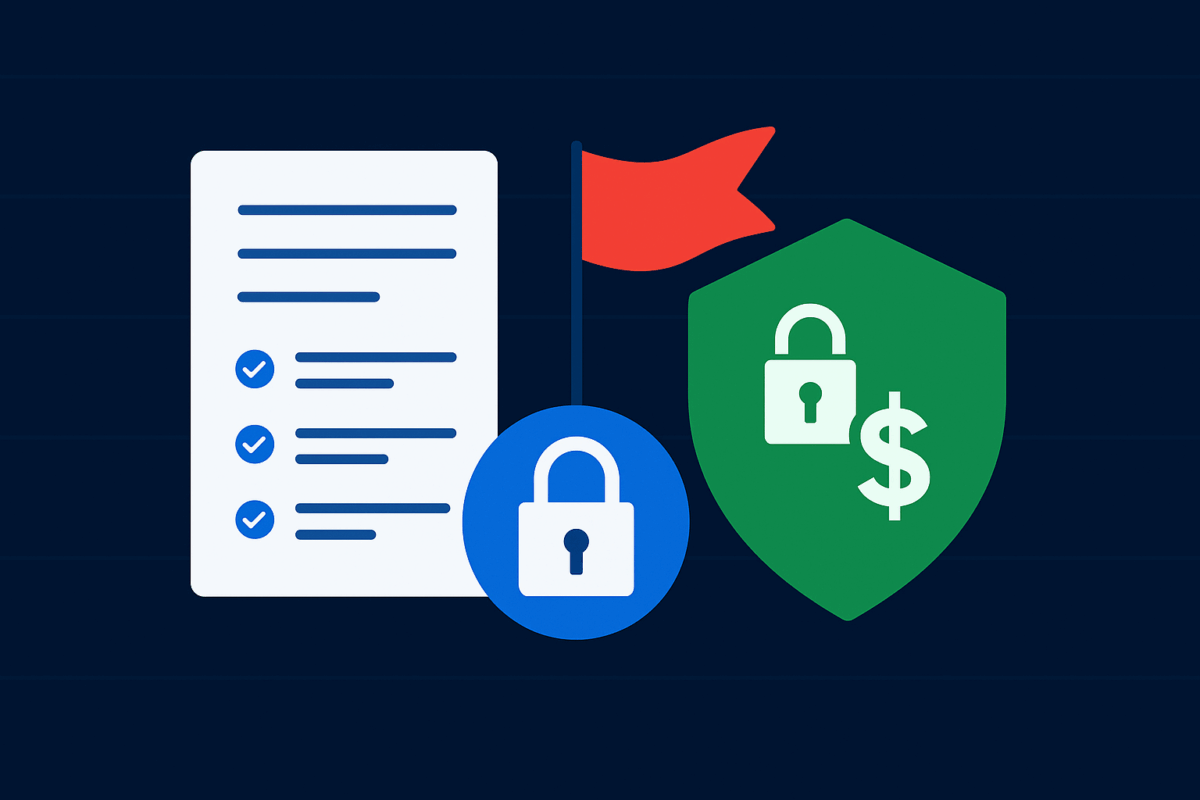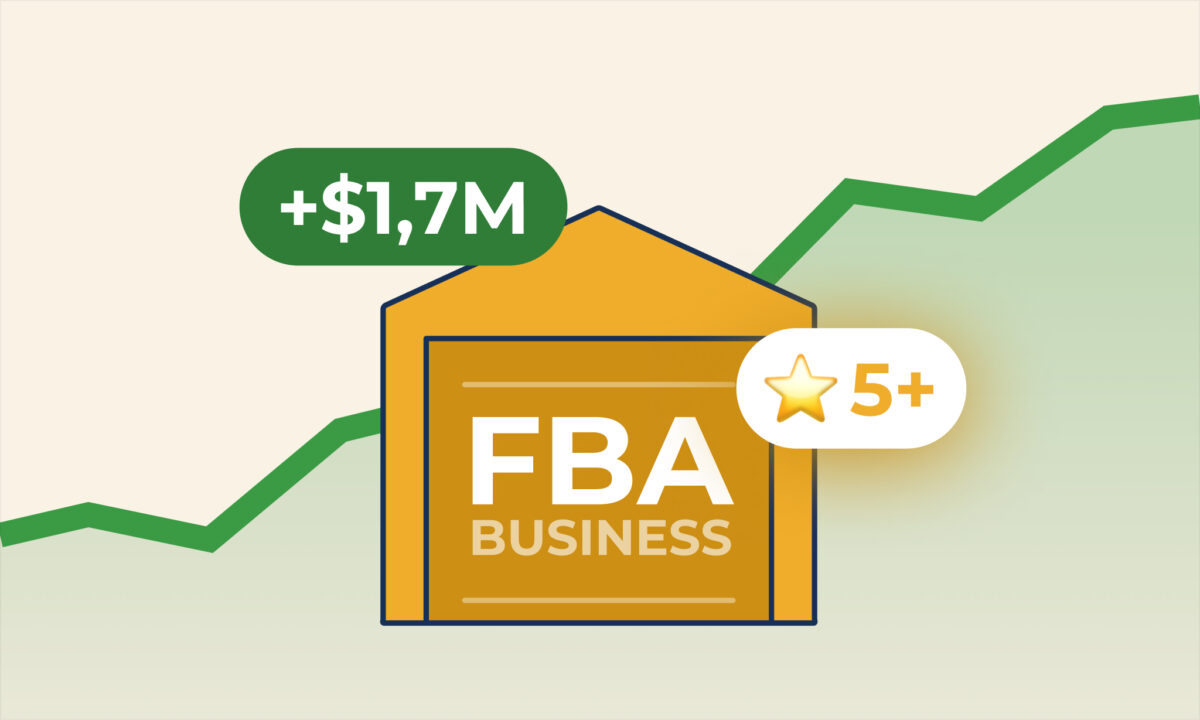Buying an existing Amazon business can be a fast-track to entrepreneurial success – but only if you know what to look for. As a first-time buyer evaluating Fulfillment by Amazon (FBA), Fulfillment by Merchant (FBM), or hybrid Amazon businesses, doing thorough due diligence is critical. This tactical checklist breaks down the key areas savvy buyers examine before acquiring an Amazon business. Each section explains why it matters and highlights good vs. weak indicators to help you spot solid opportunities and avoid risky deals. Use this structured checklist when reviewing Amazon business listings (such as those on marketplaces like Exit.io) to make an informed investment.
1. Financial Performance and Records
Why it Matters: The financial health of the business determines its actual profitability and valuation. You need to verify that the sales and profits are real, sustainable, and worth the asking price. Strong financials indicate a healthy business, while shaky numbers could signal hidden problems.
Good Signs:
- Clean, verifiable financial records: The seller provides profit-and-loss statements, balance sheets, and cash flow reports that reconcile with Amazon’s reports and bank statements. The revenue and profit trends are stable or growing year over year.
- Healthy profit margins: After Amazon fees, cost of goods, advertising, and other expenses, the margins are solid (e.g. in a typical range of ~15–30%). There are no unexplained spikes or dips in revenue, and any seasonal trends are clearly accounted for.
- Proper expense accounting: Costs such as inventory purchases, Amazon fees, shipping, and advertising are fully documented. The business isn’t overly dependent on one-time windfalls or aggressive cost-cutting that might not be sustainable for a new owner.
Red Flags:
- Declining or inconsistent revenue/profit: Sales have been dropping or fluctuating wildly without a good explanation. A sharp recent decline might indicate increased competition or a dying product line.
- Unrealistic add-backs or exclusions: The seller “adds back” a lot of expenses (like their own salary, R&D, etc.) to inflate the profit, or they exclude costs like ads or inventory from their figures. This can mask the true earning power.
- Poor bookkeeping or lack of proof: Financials that are cash-based only or not reconciled with Amazon payout reports could hide issues like excessive refunds or unrecorded costs. If the seller can’t produce clear documentation (invoices, bank statements, tax returns), consider that a big warning sign.
2. Amazon Account Health and Performance Metrics
Why it Matters: An Amazon business is only as good as its standing with Amazon. If the seller’s account is at risk of suspension due to policy violations or poor performance, you could lose everything overnight. Buyers scrutinize account health to ensure they aren’t inheriting an account on the verge of trouble.
Good Signs:
- Healthy Account metrics: The Amazon Seller Central Account Health dashboard is in good standing (e.g. a green Account Health Rating). Key metrics like Order Defect Rate (ODR), late shipment rate, and customer service metrics all meet Amazon’s targets (ODR below 1%, etc.). There are zero policy violations or performance warnings on the account.
- No history of suspensions or violations: The seller account has a clean track record with Amazon. There have been no suspensions, listing removals, or serious policy infractions (like intellectual property complaints or review manipulation flags). A clean history means less risk for you post-acquisition.
- Positive seller feedback: Customers’ feedback on the seller (separate from product reviews) is largely positive, indicating good fulfillment and customer service practices. A high seller feedback rating (e.g. 95%+ positive) over many orders shows the business consistently keeps customers happy.
Red Flags:
- Prior Amazon violations: Any history of account suspension, multiple policy warnings, or use of black-hat tactics (fake reviews, review swapping, selling prohibited items) is a major red flag. These issues can resurface or lead to a sudden ban after you take over.
- Poor performance metrics: An elevated Order Defect Rate, late shipping problems (for FBM/hybrid models), or a pattern of customer complaints suggests operational problems or quality issues. If the Account Health Rating isn’t green, you’ll need to investigate why.
- Not brand registered or defensible: If the business is a private label brand but not enrolled in Amazon’s Brand Registry, it lacks extra protection against hijackers and counterfeits. While not a direct account health metric, lack of Brand Registry or trademark can weaken the account’s defensibility and is something to remedy quickly if you proceed.
3. Product and Traffic Diversification
Why it Matters: Diversification reduces risk. Buyers want to see that the business isn’t dependent on a single product or a single source of traffic for all its sales. A diverse product range and multiple traffic streams mean the business can better withstand market changes, competition, or an issue with one item or channel.
Product Portfolio Diversification – Good Signs:
- Multiple products or SKUs contributing to revenue: The business sells a range of products (or variations) rather than one “hero” product representing the vast majority of sales. This balance means if one product’s sales dip, the others can help sustain the business.
- Best-sellers with room to expand: The current products have solid sales and there are opportunities to launch related products or line extensions. A diversified, yet focused niche (e.g. a brand with several complementary products) indicates both stability and growth potential.
- Limited seasonality or balanced cycles: If products are seasonal, the portfolio includes items across different seasons to balance cash flow. Or the main products have year-round demand. This ensures revenue isn’t confined to one part of the year only.
Product Portfolio – Red Flags:
- One-product dependency: If one product accounts for, say, 80–90% of revenue, the business is highly vulnerable. A single Amazon listing glitch, stockout, or new competitor for that product could crash the revenue.
- Shrinking or outdated product line: The products might be in a declining niche or fad that’s past its peak. A narrow catalog with no obvious room for new products can limit future growth.
- High return or defect rates on key products: If the flagship product has a lot of returns, bad reviews, or quality issues, diversification won’t help much – the core offering itself is weak and drags the business down.
Traffic and Channel Diversification – Good Signs:
- Multiple traffic sources: The business isn’t relying solely on one channel (like only organic Amazon search). In addition to Amazon’s marketplace traffic, it might utilize Amazon PPC ads effectively, and possibly external sources (e.g. it has some sales via its own website, email marketing, or other marketplaces like Walmart/eBay). A mix of organic and paid traffic, and perhaps multi-channel sales, makes the revenue stream more resilient.
- International or multi-market presence: Beyond just Amazon US, the brand may also be selling in other Amazon marketplaces (Europe, Canada, etc.) or through FBM to international customers. Broader market reach means the business isn’t tied to one region’s demand or Amazon policy changes in one country.
Traffic/Channel – Red Flags:
- All eggs in one basket: If 100% of sales come from a single source – for example, only Amazon organic search or one ad campaign – the business is exposed. A change in Amazon’s algorithm or an ad cost spike could sharply impact sales.
- No external presence whatsoever: The brand has zero presence outside of the Amazon platform (no social media, no website, no customer list). While many Amazon businesses start this way, a total lack of off-Amazon outreach means a new owner will be starting from scratch to diversify traffic. It’s not a deal-breaker, but it is a growth opportunity the buyer must be ready to tackle.
4. Supplier Agreements and Supply Chain Stability
Why it Matters: Reliable supply and cost-effective sourcing are the lifeblood of any product business. Buyers examine supplier relationships to ensure that inventory will keep flowing smoothly after the acquisition. A weak supplier situation can lead to stockouts, quality issues, or margin erosion down the line.
Good Signs:
- Stable, long-term supplier relationships: The seller has one or more reliable suppliers with whom they’ve done business for a while. Ideally, there are written supplier agreements or contracts in place (covering pricing, lead times, minimum order quantities, etc.). Consistency in product quality and delivery times indicates the supplier can meet future demand.
- Diversified or backup suppliers: If a product can be sourced from more than one supplier or factory, that’s a plus. It means the business isn’t completely beholden to a single supplier. In case one factory has issues (production delays, price increases), there’s a backup option to prevent disruption.
- Favorable terms: Look for supplier terms that benefit the business, such as bulk pricing discounts, reasonable lead times, and credit terms (e.g. not having to pay 100% upfront for inventory). Good terms improve cash flow and reduce the chance of running out of stock.
Red Flags:
- Single-source dependency with no contract: The entire product line comes from one supplier, and perhaps there’s not even a formal contract or agreement. If that supplier raises prices, goes out of business, or decides to stop working with the new owner, the business could be in trouble.
- Quality or delivery issues: Any history of late shipments, inconsistent product quality, or high defect rates from the manufacturer is concerning. Unreliable suppliers lead to stockouts and unhappy customers (which in turn hurts account health).
- Unclear transferability: If the supplier relationship was informal or built on the owner’s personal rapport, confirm that the supplier will continue to work with a new owner on the same terms. Also ensure any existing purchase orders or deposits can be transferred. A buyer should ideally speak with the supplier during due diligence to gauge their cooperation and commitment.
5. Advertising and Marketing Efficiency
Why it Matters: Most Amazon businesses use Pay-Per-Click (PPC) advertising or other marketing to drive sales. The efficiency of these campaigns directly affects profitability. If a business only thrives by overspending on ads, that’s a warning sign. Buyers will analyze advertising performance to see if they can maintain or improve it without killing profits.
Good Signs:
- Profitable Amazon PPC campaigns: The seller’s Amazon advertising has a reasonable ACoS (Advertising Cost of Sales) and positive ROI. For example, ad spend might be, say, 10-20% of revenue and resulting in strong sales growth. Well-optimized campaigns indicate that the business knows how to acquire customers without overspending.
- Organic traffic and reviews drive sales: A healthy portion of sales are coming organically (through good search rank and strong product reviews), not solely from paid ads. This means the products have market traction and don’t require a huge ongoing ad budget for every sale.
- Effective marketing strategy: Beyond PPC, if the business employs any other marketing (like Amazon Deals, social media advertising, or email campaigns), there is evidence these are working. For instance, repeat customers via email or a measurable contribution from external ads (Google, Facebook) can be a plus, showing diversified marketing efforts.
Red Flags:
- High advertising dependency: If an outsized percentage of revenue is spent on ads (e.g. ACoS is very high, or the business barely breaks even after ad costs), you might be looking at a pay-to-play product that struggles to sell on its own. This leaves little room for error if ad costs rise or if you need to scale ad spend further.
- Poorly optimized campaigns: Signs like wildly fluctuating ACoS, irrelevant keywords being targeted, or no clear ad strategy suggest the current owner might not have optimized the marketing. While that could be an opportunity (you could improve the ads), it also means current performance might be weaker than it appears at first glance.
- No advertising data or transparency: If the seller can’t provide access to their advertising reports or hasn’t been tracking key metrics, it’s hard to judge how sustainable their sales are. Lack of data could mean you discover later that many sales were unprofitable when marketing costs are factored in.
6. Legal and Intellectual Property Status
Why it Matters: Hidden legal issues can turn your dream acquisition into a nightmare. Buyers must ensure the business is operating legally and that all intellectual property (IP) rights are in order. This includes trademarks, patents, and compliance with Amazon’s and government regulations. Overlooking legal/IP problems could mean fines, lawsuits, or having to stop selling a product.
Good Signs:
- Clear ownership of IP: The brand name is trademarked (or at least trademark application in process), and any proprietary products have patents or design protections if applicable. All IP needed to run the business (logos, content, etc.) will transfer to you. This protects the brand from copycats and adds value.
- No ongoing legal disputes: There are no lawsuits, cease-and-desist letters, or infringement claims against the business. The seller confirms that the products do not infringe on others’ patents or trademarks. In regulated categories, the necessary certifications or permits (e.g. safety certificates for toys, FDA compliance for supplements) are in place.
- Amazon policy compliance: The business adheres to Amazon’s rules – no terms-of-service violations, no banned product types, and compliance with things like tax obligations. A compliant business is far less likely to face future suspensions or legal troubles.
Red Flags:
- IP infringement risks: If the business has no trademark for a private label brand, you’ll want to secure one fast – but worse is if another company already has a similar trademark (risking that you might have to rebrand later). Also, any hint that the products might be counterfeit or unlicensed (for example, selling merchandise with someone else’s characters/logos without permission) is a huge red flag.
- Pending or past legal issues: Any history of product liability claims, patent infringement suits, or other legal disputes needs careful review. If the seller is currently in a legal battle or under threat of one, you could inherit that problem. Even past issues are worth examining to see if they were resolved or could recur.
- Unverified compliance: In certain niches (supplements, electronics, cosmetics, etc.), lack of proper testing, certifications, or labeling can get the product removed or invite regulatory fines. If the seller cannot demonstrate compliance where it matters, the business might be one complaint away from a shutdown.
7. Operational Processes and SOPs
Why it Matters: How the business runs day-to-day will determine how easy (or hard) it is for you to take over. Smooth, well-documented operations reduce the learning curve and the risk of things falling apart during transition. Buyers inspect the operational setup – from inventory management to order fulfillment to customer service – to ensure the business is efficiently run with no nasty surprises.
Good Signs:
- Documented Standard Operating Procedures (SOPs): The seller has written processes for key operations (inventory ordering, listing optimization, customer service responses, etc.). Well-documented SOPs mean you can learn and delegate tasks much faster. It shows the business isn’t just “in the owner’s head.”
- Efficient fulfillment and inventory management: If FBA, products are reliably shipped to Amazon warehouses in a timely manner, with inventory levels optimized to avoid stockouts or overstock fees. If FBM or hybrid, the seller uses a robust system (maybe a 3PL warehouse or streamlined in-house process) to ship orders quickly. Healthy inventory turn rates and an organized tracking system are in place.
- Team or automation in place: Ideally, the business has either automation tools or a small team/virtual assistants handling routine tasks (customer emails, reordering stock, managing ads). Low owner involvement (e.g. the owner only spends a few hours a week on high-level oversight) is a strong indicator of operational efficiency.
Red Flags:
- Lack of process documentation: If there are no SOPs or guides, you will have to learn everything directly from the owner during transition and risk missing details. An ad-hoc operation can lead to mistakes or a dip in performance when the business changes hands.
- Owner = essential for everything: Be cautious if the current owner is working 40+ hours a week doing all tasks themselves, or if they handle something particularly specialized (e.g. they personally craft the product or have unique skills). A business heavily reliant on the owner’s constant involvement or personal skills will be harder to run for a newcomer unless you hire help or have the same expertise.
- Fragile logistics: Signs of poor operational management include frequent stockouts, late shipments (if FBM), disorganized inventory (not knowing how much stock is where), or high employee turnover (if there are employees). If the operational backbone is shaky, you may need to invest time and money fixing it post-sale.
8. Brand Strength and Customer Loyalty
Why it Matters: On Amazon, brand matters more and more. A strong brand can command repeat customers, higher conversion rates, and resilience against competitors. Buyers will assess the intangible assets like brand reputation, customer loyalty, and overall presence beyond just the product listings. A business with a real brand is generally more valuable and easier to grow than one selling generic products.
Good Signs:
- Recognizable brand with a story: The business has an established brand name in its niche, with consistent branding across its products, Amazon Storefront, and any social media or website. Perhaps there’s a compelling brand story or mission that connects with its audience. This indicates customers may specifically search for the brand, not just generic product terms.
- Positive reputation: The overall sentiment in reviews, feedback, and possibly social media is positive toward the brand. Lots of good product reviews, along with any press mentions or influencer partnerships, suggest strong brand credibility. Customers likely recommend these products to others, leading to organic growth.
- Brand assets and community: The business might have assets like a branded website, an email list of customers, or active social media profiles with followers. Even if small, these are foundations for a community of loyal customers and can be leveraged for marketing. A brand registered on Amazon (Brand Registry) also has access to enhanced content and advertising tools, further strengthening its position.
Red Flags:
- “Me-too” product with no differentiation: If the business is basically selling unbranded or white-label products identical to many others on Amazon, then it lacks brand strength. In this case, the business competes mostly on price and reviews, which can be a race to the bottom. Absence of a trademark or unique branding means competitors can easily copy or undercut the products.
- Reputation issues: Poor overall product ratings (e.g. an average of under 4 stars) or many unresolved negative reviews can tarnish the brand. Also, if you find negative discussions about the brand in forums or on social media (complaints about quality, service, etc.), that’s a signal the brand’s reputation needs repair.
- No off-Amazon presence: While not critical, a lack of any brand presence outside Amazon could be seen as a weakness in brand strength. If the business has been around for a while but still has zero recognition beyond Amazon search results, it may indicate the brand hasn’t fostered true customer loyalty (customers might not even recall the brand name after purchase). This is fixable, but it means you’re mainly buying a product sales history, not a brand with a following.
9. Customer Feedback and Reviews
Why it Matters: Customer reviews are the lifeblood of Amazon sales. They reflect product quality and customer satisfaction, and they heavily influence conversion rates. Buyers will comb through the feedback to see how well the products are received and whether there are recurring issues. Good reviews validate the business’s value; bad reviews or low ratings signal potential trouble and areas to improve.
Good Signs:
- High average product ratings: The products have strong star ratings (generally 4-star or above) and a healthy number of reviews. This suggests the products meet customer expectations. A large quantity of genuine, positive reviews provides social proof that new buyers can trust.
- Responsive customer service: In the review or Q&A sections, the seller responds professionally to customer complaints or questions. Timely replacements, refunds, or improvements based on feedback show that the business cares about customer experience, which helps maintain good ratings.
- Low return and refund rates: If you can obtain data on returns/refunds (often high-level info is in Seller Central reports), a low return rate means customers are largely satisfied with what they receive. It aligns with good reviews and indicates product claims match reality.
Red Flags:
- Many negative reviews or trends: Watch out for repeated complaints in reviews about the same issue – for example, “product broke after one use” or “item not as described.” Clusters of similar complaints mean a design flaw or quality control issue that you’d inherit and need to fix. Also, an average rating significantly below competitors could make it hard to compete unless you plan a product overhaul.
- Recent review problems: A sudden influx of bad reviews in the last few months is alarming – it could be due to a bad production batch or a change in product quality. Investigate if the seller made a change (different supplier, cost cutting) that hurt the product. You don’t want to buy a product just as its reputation turns sour.
- Signs of review manipulation: If the review history looks “too good to be true” (all 5-stars with thin comments, or a burst of reviews in a short time frame that feels unnatural), the seller might have engaged in review manipulation. This is against Amazon’s terms and could result in reviews being removed or even account penalties. A business built on fake reviews is on shaky ground.
10. Owner Involvement and Transition Plan
Why it Matters: A business might look great on paper, but how much work does it take to run? First-time buyers especially should know what daily or weekly effort is required and whether they can handle it (or afford to outsource it). A business with minimal owner involvement and a clear transition plan is far more attractive and easier to take over than one that’s heavily owner-dependent.
Good Signs:
- Low owner workload: The current owner spends a manageable amount of time (e.g. a few hours a day or less) running the business, focusing mostly on high-level decisions. Many tasks are automated or handled by others. This suggests the business won’t consume your entire life, and you can focus on growth instead of just maintaining operations.
- Existing team or outsource partners: If there are employees or virtual assistants in place (for customer service, inventory management, etc.), they are likely willing to continue under new ownership. Having trained staff or reliable freelancers means continuity. Similarly, if aspects like fulfillment are outsourced to FBA or a 3PL, those will carry on without heavy new effort from you.
- Seller support during transition: A good seller will often provide a training period or support after the sale (commonly 30-90 days of help) to teach you the ropes. If the owner already has a transition plan, training documents, or is open to consulting post-sale, you can get up to speed quickly and confidently.
Red Flags:
- Owner wears all hats: Be cautious if the owner is personally handling every facet (sourcing, marketing, customer emails, packing boxes for FBM shipments, etc.). That workload might be unsustainable for you alone. If you’ll need to immediately hire help or dramatically change operations to make it manageable, factor that into your plans and costs.
- No clear transition plan: If the owner seems reluctant to train or claims “it’s all easy, nothing to it” without proof, you might find they have a lot of tacit knowledge that’s not documented. A dismissive attitude toward your need for training is a red flag. You don’t want the business to fall apart the day after takeover because you didn’t know a critical trick or contact.
- Key person risk: In some cases, the owner might have personal relationships or skills that the business success hinges on (for example, a personal relationship with a key supplier or a niche skill in advertising). If those won’t transfer to you, the business could suffer. Always identify any area where “the business is the owner” and see if it can be systematized or mitigated.
11. Growth Potential and Upside Opportunities
Why it Matters: Beyond evaluating what the business is now, a buyer wants to know what it could become under new ownership. Growth potential determines how much you can expand revenue and profit after acquisition, which is often how you truly get a return on your investment. Buyers look for untapped opportunities and also assess whether the market conditions favor future growth or not.
Good Signs:
- Untapped markets or channels: There are clear expansion opportunities the current owner hasn’t fully pursued. For example, launching new products in the same niche, expanding to other Amazon marketplaces (EU, Canada, etc.), or opening an ecommerce site to sell beyond Amazon. Low-hanging fruit could also include international shipping, wholesale/B2B sales, or other channels that haven’t been tried yet.
- Under-optimized operations or marketing (easy wins): Sometimes businesses are doing well despite not being fully optimized – say, the listings could use better SEO or the product photography is mediocre. As a buyer, you might spot simple improvements (better listing content, using Amazon Enhanced Brand Content, more aggressive but efficient ad campaigns, building a social media presence) that could quickly boost sales. These represent upside that you can capture.
- Growing niche or trending products: If the overall market for the product is growing or at least stable, you have the wind at your back. Check if the niche is on an upward trend, and if the brand is positioned to ride that trend. A business in a growing category with room to increase market share is ideal for scaling up after acquisition.
Red Flags:
- Saturated or declining market: If the product category is shrinking or was a fad that’s now fading, future growth will be hard no matter what improvements you make. A declining trend (for example, a product tied to a passing trend or obsolete technology) could mean you’re buying a business at its peak with downhill to come.
- Maxed-out easy wins: If the seller is very sophisticated and has already optimized everything (listings, pricing, ads, off-Amazon marketing) to the nines, there may be fewer obvious areas for you to add value. That’s not necessarily bad (you’re buying a well-run business), but you should temper growth expectations and perhaps plan more creative strategies.
- Emerging threats: Consider what could impede growth. Are there big competitors entering the space (especially Amazon itself or large brands)? Any pending regulatory changes or Amazon policy shifts that could limit the business’s expansion? If, for example, a new Amazon fee structure will cut margins, or a competitor is launching a very similar product next month, these could hamper the upside you’re forecasting.
Summary
For a first-time buyer, acquiring an Amazon FBA, FBM, or hybrid business can be an incredible opportunity – if you perform careful due diligence. This checklist of financials, account health, diversification, supplier stability, advertising efficiency, legal status, operations, brand strength, customer feedback, owner involvement, and growth potential covers the critical areas that experienced buyers scrutinize. As you evaluate listings, use these criteria to systematically vet each business. A great Amazon business investment will show strong numbers, a clean account, diversified risk, reliable operations, and clear avenues for growth. On the other hand, if you spot several red flags across these categories, pause and reconsider before proceeding.
In summary, a good Amazon business is one that’s profitable, stable, and well-positioned for the future, without being overly dependent on any single factor. By keeping an eye out for both the good indicators and the warning signs outlined above, you’ll be well-equipped to identify a worthwhile acquisition. Conducting thorough due diligence with this checklist will help you enter your first Amazon business purchase with confidence, knowing you’ve looked at what truly matters for long-term success. Good luck with your acquisition journey!
